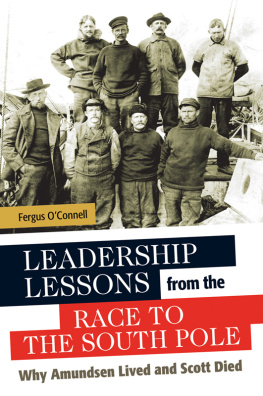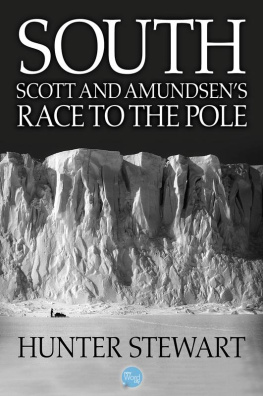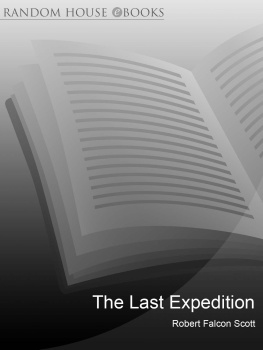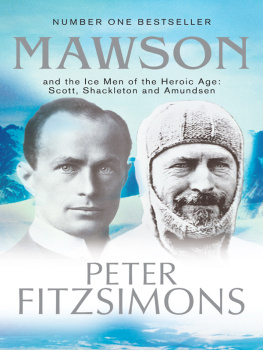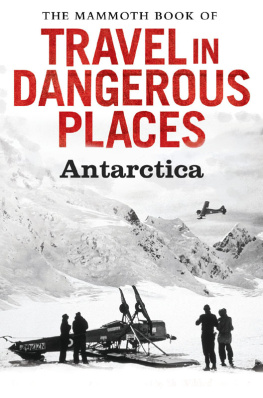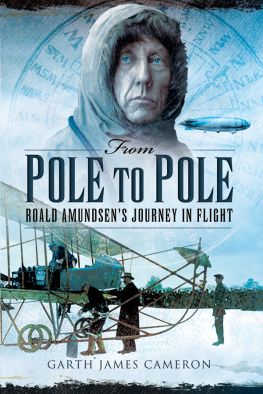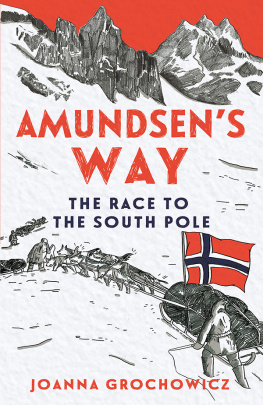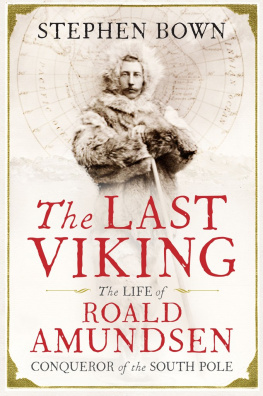Leadership Lessons from the Race to the South Pole
Leadership Lessons from the Race to the South Pole
Why Amundsen Lived and Scott Died
Fergus OConnell

Copyright 2015 by Fergus OConnell
All rights reserved. No part of this publication may be reproduced, stored in a retrieval system, or transmitted, in any form or by any means, electronic, mechanical, photocopying, recording, or otherwise, except for the inclusion of brief quotations in a review, without prior permission in writing from the publisher.
Library of Congress Cataloging-in-Publication Data
OConnell, Fergus.
Leadership lessons from the race to the South Pole : why Amundsen lived and Scott died / Fergus OConnell.
pages cm
Includes bibliographical references and index.
ISBN 978-1-4408-3500-1 (print : alk. paper) ISBN 978-1-4408-3501-8 (e-book) 1. Project managementCase studies. 2. LeadershipCase studies. 3. AntarcticaDiscovery and explorationBritishCase studies. 4. AntarcticaDiscovery and explorationNorwegianCase studies. I. Title.
HD69.P75O284 2015
658.4'092dc23 2014048746
ISBN: 978-1-4408-3500-1
EISBN: 978-1-4408-3501-8
19 18 17 16 15 1 2 3 4 5
This book is also available on the World Wide Web as an eBook.
Visit www.abc-clio.com for details.
Praeger
An Imprint of ABC-CLIO, LLC
ABC-CLIO, LLC
130 Cremona Drive, P.O. Box 1911
Santa Barbara, California 93116-1911
This book is printed on acid-free paper 
Manufactured in the United States of America
In loving memory of Clare
Victory awaits him who has everything in order. Luck people call it. Defeat is certain for him who has neglected to take precautions in time; this is called bad luck.
The South Pole , Roald Amundsen
The time with Roald Amundsen is also something one never forgets. He was so full of good humour, it was not boring around him. If he just looked at you, you were in full gear. And even so he was so calm, level and reliable. He was a born leader. He demanded good order in everything and could be strict and stubborn. He was such that one both had respect for him and was fond of him.
Olav Bjaaland, 1945
Contents
The Case Study
The race to be the first man to stand at the South Pole, which took place in the years 1910 through 1912 between the British explorer Robert Scott and the Norwegian Roald Amundsen, is that rarest of leadership case studies. Two different teams carry out the same project. One is spectacularly successful; the other fails disastrously. Not only that, both projects are documented. One project leader writes a book based on his expedition diaries; the others expedition diaries are found after his death. There is much to be learned from this story about leadership and the execution of projects.
ScottPro or Anti?
You need to (or may already) know that this is a story that has polarized (no pun intended) opinion. Up to the late 1970s, Scott was widely seen as a hero, a legend, particularly in his own country. Roland Huntfords iconoclastic 1979 book, Scott and Amundsen , changed all that. Huntford demolished Scotts legend with the literary equivalent of a sledgehammer. Huntfords thesis is that Scott was an almost idiotic bungler, while Amundsen was a cool professional who superbly executed a well-thought-out plan.
Since then, the world has dividedvery emotionally in some casesbetween supporters and opponents of Huntford and, thus, Scott. You only have to look at the review comments on Amazon to see what strong feelings Huntfords work continues to generate.
For example, the great Sir Ranulph Fiennes is a Scott defender. In his book, Captain Scott , Fiennes tries to restore a lot of Scotts reputation. Given Fienness achievements in polar regions, his opinion is not one to be taken lightly.
Then there is, to take another example, Susan Solomons The Coldest March: Scotts Fatal Antarctic Expedition , which makes the casebased on available datathat Scott suffered unseasonably low temperatures on his return from the Pole and that this was the principal cause of his undoing.
My book doesnt call it one way or the other. I am neither pro nor anti Scott. Rather, it lets you, the reader, decide. While I have my own views on both men and their expeditions, I try as far as is humanly possible not to let those opinions intrude here. I try to let the facts speak for themselves. Huntford, for example, makes a lot of judgments or gives opinions about Scottfor instance, on his leadership style or his state of mind. I have tried as far as possible to avoid doing that.
And when I do offer my opinion, I make clear that (a) it is just that, an opinion, and that (b) Im not trying to stuff it down your throat. Im merely stating my opinion based on my knowledge of the facts, my understanding of projects, and whatever grasp of human nature Ive managed to gain in my life.
Who Am I to Write This Book?
Its also important for me to say that I have never been to Antarctica. I havent man-hauled sledges over ice. I dont know how to ski and have never driven a dog team.
But what I do have is knowledge about projects. In my own career and in my consulting work, I have seen or been involved in literally thousands of them. (The biggest was the Special Olympics World Games 2003, the worlds biggest sporting event that year, where my company acted as project management consultants.) The fact is that I know a good project when I see one. And I know a turkey when I see it. There are certain characteristics that are common to all successful projects. Equally, there are certain characteristics common to failed ones.
This book looks at these two projects through this lensas examples of projects. The questions it poses are quite simple: were these projects well or badly planned? Executed? In short, were they well led?
Why Another Scott and Amundsen book?
On the day I wrote this preface, I did a search on the term Scott Amundsen on Amazon. I got 704 results. Does the world really need another Scott and Amundsen book?
Well actually, I think it does. No one has looked at this project through the lens with which were going to look at it. No one has said, If these are the characteristics of a successful project, how do these two projects measure up? So the book is a new way of looking at an old story.
Leadership Lessons
I think I need to make clear too what is meant by a book whose title begins with the words Leadership Lessons. There are a number of books on the market that begin with these words. Most of these books follow the same formula. They look at the lives of some historical characters and, by describing various events from their lives, draw general conclusions about how to lead teams and about leadership styles and traits.
This book is a little different, a bit more expansive. It does not just focus on the leadership styles of Robert Scott and Roald Amundsen, though it does certainly look at those aspects. Rather, it focuses on how they led their projectsin other words, how they got things done. Because this, ultimately, is what leadership is all about: its about getting things done.
Professionals and Amateurs
In 1985, I worked on a project to develop a laptop computer. Today, there would not be anything particularly interesting about that. A laptop is a piece of consumer electronics. I imagine there are hundreds, maybe even thousands, of them produced by development teams every year. But back in 1985, this was radical stuff. We imagined our target customers, busy executives on the road, checking into their hotel rooms, connecting to a mailbox from where they could download their e-mails, looking up the Dow, writing documents, working on spreadsheets, and preparing presentationsall the stuff we take for granted today.
Next page
